John Telford
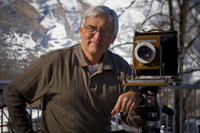
You became interested in photography while on your mission in the Samoan Islands. What initially sparked that interest?
Being in that country and being in that environment. It’s very, very beautiful. It was a place where I wanted to take some pictures as a record of the experiences that I was having. And as I took more and more pictures, I got more and more serious about it, until I eventually decided that it was something I wanted to pursue. I then became known as the mission photographer.
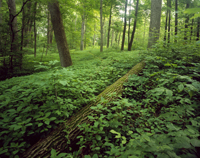
It wasn’t an official title or anything, but I was so involved in it that eventually I had an assignment, as it were, from the then junior member of the Quorum of the Twelve Apostles, Thomas S. Monson. I was asked to take pictures at a ceremony that was given in honor of a visit he made to the islands. I took the pictures and then produced a little book for him that had both the photographs and an interpretation of all the things that had happened.
After your mission, what steps did you take to become a professional photographer?
I came to BYU to play baseball on a scholarship, and also because they had a photography program. At the time BYU did not have a degree in photography, but there were several classes I could take, so I took all the classes I could and then just started looking for jobs in photography. One job led to another and within a year or so of being out of school, I was working as a portrait photographer and then as a commercial photographer at a commercial studio here in Salt Lake. I’ve been making my living in photography ever since.
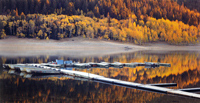
What other photographers have influenced your work?
I’ve been influenced a great deal by prominent West Coast landscape photographers, starting with Ansel Adams, Edward Weston, and Wynn Bullock. They are the ones that have been my primary influence. Eliot Porter was another strong influence in the color work that I have done, as well as other people along his same lines.
What drew you to those particular photographers?
While I was at BYU studying, I was introduced to the work of Ansel Adams and became very enamored of the work that he had done. I began studying his work and his techniques. Eventually I got to study with him a little bit and was introduced to several other photographers in the circle. An unassociated experience along that line is that while I was working in commercial photography in Salt Lake, I made a proposal to my boss that we open a gallery, and in 1972 we established the Edison Street gallery.
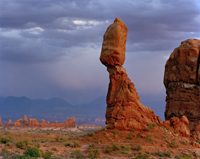
As I look back on it now, it was actually one of the very first galleries in the whole country that was devoted solely to exhibiting photography. Through that experience I became acquainted with a number of very prominent photographers throughout the country as we exhibited their work in the gallery and brought that caliber of photography to Salt Lake and Utah.
Where do you find your inspiration for your work?
There are two aspects to my work. One of them is in the landscape, the environmental photography, the photography of the natural world, which I’ve done for a number of years. I just go out and I photograph. The inspiration is a matter of going out and putting myself in places that are just incredibly interesting and beautiful.
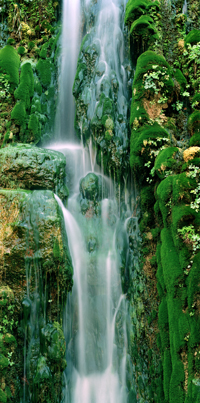
The other side of that is that after I joined the faculty at BYU and started teaching photography on a full-time basis, I became much more interested in doing work that would be in harmony with the mission of BYU as well as the Church. So I started photographing places that are related to Church history and the historic architecture of the Church. I’ve done a number of different projects that have been published extensively over the past fifteen years.
What aspects of nature do you strive to capture in your photography?
I’m primarily interested in the ephemeral and fleeting things of the natural world. I’ve photographed natural landforms, which geologically have hardly changed at all in the lifetime of a human being.
And yet it’s not the landform that interests me per se. It’s the light that illuminates the landform and the conditions that are very fleeting. So as I photograph, I am interested in seeing the landscape in a light that is very unusual. As opposed to ordinary, middle-of-the-day light, I’m looking for the changing weathers. I’m looking for what is referred to as “the sweet light.” You know, light that changes very, very rapidly at the extremes of the day.
Those are the things that interest me a great deal, and it’s in those kinds of conditions that I make most of my photographs.
Of all the photographs that you’ve taken, do you have a favorite?
I don’t know that I could isolate it down to a single one. There are many, many photographs that continue to mean a lot to me—it’s really hard to narrow it down to just one or two.
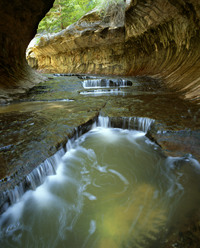
There is one, though, that I’ve talked about a lot. It is a photograph that I made while I was at a workshop where Ansel Adams was the primary teacher. It’s a photograph of five redwood trees. I got up early one morning to go out and photograph in Yosemite Valley, and I saw this series of trees that are laid out in a symmetrical pattern of five. There’s one tree in the center and it’s surrounded by four additional trees. The light when I first saw it was spectacular—a very brilliant quality of light. As I started setting up the camera, I ended up taking so much time doing it that eventually the light changed and it was no longer as interesting as it was when I first saw it. So I came back the next morning to try it again, and still, I spent too much time in calculating and setting up the camera and missed the opportunity. Finally on the third morning, I came early enough to get everything set up and was able to make the photograph. Just that experience was interesting in its own right—the commitment of three days to make a photograph.
The other part that was interesting is that a year or two later, Ansel was in Salt Lake on a book signing, and we invited him to come over to the gallery, which had been established by that point. This photograph was hanging in the foyer of the gallery and I noticed him looking at it. I said, “Have you ever seen those trees before?” He indicated that he had not seen them and then I told him, “That’s interesting, because they’re only about two hundred yards away from your house in Yosemite.” He looked at it again for a minute and finally turned to me and said, “Wow. I wish I had taken that picture.” That was a nice compliment.
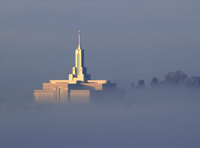
Where are your favorite places to photograph?
I’ve really enjoyed going to Israel and the Holy Land and making the photographs for a book, In the Footsteps of Jesus, that was published eight years ago and will be republished this year. I enjoyed very much going to South America and Chile and photographing in Torres del Paine National Park too, which is an incredible place. On the one hand, I’m making photographs for a book about our Savior, and on the other hand I’m making photographs of an environment that is inherently beautiful. Photographing in Alaska was very enjoyable too.
Six to eight years ago I had the opportunity of going to Cuba and photographing there, which is an unusual place for Americans to be able to travel to. But that series of photographs is different from any of the other things that I had done before because they are predominantly about the people and not the landforms. When I’m photographing the environment, it’s just me and the environment. When you’re photographing people, particularly people who speak a language you don’t speak, it becomes a real challenge to approach them and get permission to photograph and then get spontaneous reactions from them. It’s a totally different experience. I feel like there was a real stepping out of my comfort zone, and that I was doing something that I hadn’t really done a lot of. I learned a lot and made a lot of personal progress in being able to do that kind of photography.
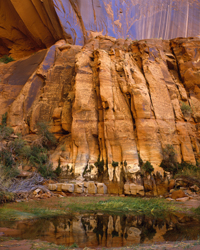
How has the gospel influenced you in your photography?
After joining the faculty at BYU, I had a strong desire to do the kind of photography that would be useful or in harmony with the mission of BYU and the Church; that it would contribute to the fabric of what the Church is all about. So, initially I began photographing the architecture of the Church. Within just a couple of years, though, I had this desire to photograph historic Mormon architecture, but not necessarily the temples—not that I was ignoring the temples or downplaying their importance, since I feel that they are incredibly significant and quite visible for the membership of the Church. But there is a second tier of architecture in the Church which is hardly known, like the tabernacles and the nineteenth-century meeting houses that are so prevalent up and down the whole state of Utah and into Idaho and other places in the intermountain area. I wanted to photograph those buildings with the desire to show their individuality, their significance, and the commitment the early Saints had in building them. The craftsmanship that went into them is phenomenal.
So I began photographing the architecture of the Church, which for me is similar to landscape photography in that I’m using that same quality of light and I’m looking for the weather and the ephemeral things that are associated with landscape photography. But in this case, there are buildings in that landscape. The photographs of the buildings are done in “the sweet light” or in this amazing weather, so it’s not just a documentation of the architecture. There’s a strong commitment to the visual beauty and the art of the buildings.

I made that series of photographs over a period of about two or three years. Exhibiting those photographs then led to a proposal to go to Nauvoo to do similar things there, which resulted in three different books done with Susan Easton Black. That also led to my going to Israel and photographing the environment in the Holy Land for In the Footsteps of Jesus. It’s been one after the other now. After photographing in Israel, I came back. And when the Nauvoo temple was announced, there was a whole new reason to go back to Nauvoo and look at the city all over again with the idea of focusing more on the rebuilding of the temple. Two books then came out associated with the Nauvoo temple. After we’d spent a lot of time in Nauvoo photographing we decided, well, let’s do other areas that are associated with the Prophet Joseph Smith. Now, I had not been to New York, Kirtland, or any of those places, so we decided that this would be a good time to do a book associated with the Prophet Joseph Smith as the 200th anniversary of his birth was rapidly coming upon us. So I did all the photographs of the areas associated with the Prophet—everything from Sharon, Vermont, the birthplace, all the way back to Nauvoo and Carthage, where the Prophet was martyred.

All of those photographs were then compiled into the book called Joseph Smith: Praise to the Man, which was also done with Susan Easton Black. I just had this desire to share my love of photography and the environment, as well as my love of the Church, and I feel like doing those photographs for that purpose helped to tell the story of the early Church and also the life of Christ.
In a sense bearing your testimony through photography for other people to enjoy.
Exactly. I gave a devotional at BYU a year and a half ago and that was one of the big things that I tried to stress: that as photographers, particularly LDS photographers, we should make sure that we’re doing photographs that reflect our testimony, rather than photographs that lower our standards to the standards of the world.
Did you learn anything new about the history of the Church that you hadn’t known before?
Oh, yes, especially from working with a person like Susan Easton Black who is so well-versed with the history of the Church. She would lay it out on a shot-list, as it were, to make sure I knew about the important places that I needed to be photographing. I know a lot about photography, but I don’t pretend to be a Church historian. And so to have someone like that to fall back on, who would say, “These are the important things that need to be photographed,” and then getting involved with the stories associated with those places—it was a real learning experience for me to be able to do that.
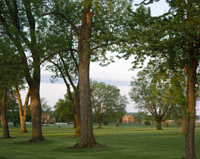
In fact, there’s also another interesting story associated with that. I had made a photograph of the Salt Lake Temple at Christmastime which had been commissioned by the Church. I think a lot of people have seen that particular photograph. It’s on the pass-along card that the Church uses. It has the Salt Lake Temple on it. So when I was in Kirtland photographing one afternoon, we drove over to the Isaac Morley farm. It was late in the afternoon and the light was just perfect to make a photograph. As my wife and I drove up, I jumped out of the car and one of the couple missionaries approached me, obviously to give the tour and the spiel on the Isaac Morley farm, and I said to this sister, “I’m here to make photographs for a book that I’m doing with Susan Easton Black. I need you to just quickly take me to what you think is the most significant place here on the Isaac Morley farm where I can make a photograph. And if we can get that photograph, then I’ll be able to slow down and listen to you and hear your spiel and do all of those things.” So she took me to a place and I made the photograph. Then we slowly made our way back to the car and she was telling me about many of the things that I obviously was not aware of concerning the Isaac Morley farm. As we got back to the car she bore her testimony to me and then handed me one of those Salt Lake Temple pass-along cards. She said, “Here. I want you to take this.” I looked at her and kind of winked and said, “I already did.” She had to stop for a minute before she realized what I’d said.
What spiritually uplifting experiences have you had while taking pictures of these places?
I think I had a lot of those experiences, particularly in the Holy Land. I was there for about six weeks. My wife and two daughters were with me for just one of those weeks and after they went home, I was there by myself for the remainder of the time. During those weeks of photographing, I immersed myself in the scriptures and read the stories about the places where I was photographing so that I would be very familiar with what had taken place and where I was, making it so I would be able to go to those locations with those stories right there in my mind. Well, when my wife and my daughters were still with me, we went to the Garden of Gethsemane. One of the interesting things about the Holy Land of course, is that there are a lot of places that are assumed to be the places where certain events happened. Once we were in the area where Lazarus’s tomb is located in Bethany, and my daughters had both been kind of complaining that the schedule was really hectic and that it was hard to feel the Spirit because we were go go go, and just being told about the history. I remember being with one of my daughters in Bethany at this tomb and I said to her, “You’ve got to stop and think about what took place here. Feel the Spirit and understand the story of what took place and try to feel the Spirit confirming it.”

The next day we were in a place above what is traditionally known as the Garden of Gethsemane, but it was a place, nonetheless, that was a possible location of where Christ actually suffered for the sins of all mankind. While I was there I wanted to just feel it by myself, so I slipped away from my wife and two daughters and went and stood among some of the olive trees. I stroked them, I felt them, and I eventually laid my head against the roughness of the bark of those olive trees. Through that experience I was literally feeling the Spirit of that place and what happened there. The Spirit really, really came over me, and tears started to flow down my cheeks. A few moments later we all walked from that spot down a road that is traditionally known as the route that Jesus took from the Mount of Olives toward the Gate Beautiful, where he made his triumphal entry into the city. We were walking down it, arm in arm, just feeling the Spirit. And in that moment none of us said anything, but tears were freely flowing down our cheeks as we realized the significance of this particular place and what we were experiencing and what had happened there some two thousand years ago. Things like that were very spiritual for me, and I realized both the importance of what I was experiencing and the importance of making photographs that would convey those same feelings.
What did you have in mind as you were trying to capture those feelings that you had there?
One of the things about doing this is realizing that Jerusalem and Israel have been conquered and destroyed, and re-conquered and built and re-destroyed over and over and over again in the two thousand years since the time of Christ. Academically you realize that most of the places that we were at are just assumed to be the places where Jesus was. The landforms have changed so significantly that it’s hard to say, “This is exactly where the Savior was” or “This is where these things actually took place.” But there are a few places that have actually been confirmed as the places where Jesus was. One of these is the Garden Tomb. Many Christians feel that this is where Jesus was in the tomb and that that is the Garden where He was resurrected and witnessed by first of all the women. Being in that environment was incredibly spiritual, and I felt both the Spirit and the pressure to make photographs that would convey that as best as I know how. Those places are all very, very significant.

At the same time, as we move into the nineteenth century and the organization of the Church and locations in Nauvoo and Kirtland, such as the temple in Kirtland, the Johnson home in Hyrum, Ohio, where the 76th section of the Doctrine & Covenants and others were given—those were also very, very significant places. In the book In the Footsteps of Jesus, I do make one comment about being in the Garden Tomb and being in the places where Jesus walked, and as I made the statement, the question came to me, “Did I walk today where Jesus walked?” In that book I recount all the times that Israel has been conquered and built and rebuilt and all those experiences—all those things that had taken place, particularly in the Garden Tomb. On the doorway to the Garden Tomb there is a quote from Luke saying, “He is not here, for He is risen,” and the thought came to me that we are here trying to feel the Spirit of Jesus, that I’m trying to walk in the places where Jesus walked. So the question really should be changed from “Did I walk today where Jesus walked?” to, “Am I walking today where Jesus would have me walk?” because that’s a far more important question to ask ourselves. It’s about doing the things we know we should do rather than just wanting to be in the places where significant Church history events have taken place.

What advice do you have for aspiring photographers?
From a photographic standpoint, I point out that photographers have to make two rather critical decisions every time they take a picture. These decisions are so fundamental that most people don’t even think about them—most of the time it’s subconscious—but at the same time, they’re made every time a picture is taken. These questions are: “Where do I point the camera?” and “When do I click the shutter?” They are fundamental and basic, and yet that’s the difference between good photographs and bad photographs. “Where do I point the camera?” means, “What am I taking a picture of? What do I include?” And sometimes, equally important is the question, “What do I not include?”
The second part of that is “When do I click the shutter?” For me, clicking the shutter at one time of day makes all the difference. I can take exactly the same picture in different light or different conditions and it’s a boring photograph, yet because of the light it may be very significant. “When do I click the shutter?” also has to do with the expression on someone’s face or the peak action, the peak moment—all those kinds of things. I talk about that but I also talk to my students about the importance of making photographs that reflect one’s testimony and one’s beliefs. I photograph things that I believe in. I photograph things that I want to promote, as it were. But I will not allow my talent to be used to promote things that I don’t believe in. For that reason, I don’t photograph products that are contrary to the teachings of the gospel, and the teachings of the Brethren. I think this talent is God-given, and I want to use it to promote the things of the gospel and things that God would want to have promoted.
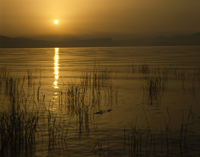
Certainly, and that probably brings you a lot of peace of mind, also.
It brings peace of mind and sometimes it’s a challenge at the same time. One of the things that I tell the students is that you’re going to have to make the decision way before the opportunity is there for you to make these kinds of photographs, particularly in professional work. You’re working professionally. You’re trying to earn a living and getting paid for what you do. It may be a tough decision to turn down a tobacco company or an alcoholic beverage company or other things that have huge budgets to be able to promote their products. But you have to make the decision when it’s not on the line that these are products I’m not going to promote. Most photographers eventually have to make that choice, and a lot of them, because there’s a lot of money involved, will use their talents to promote things that they don’t believe in. I also tell my students to have the strength and the faith to do those things that reflect your testimony.

Where do you see your career heading in the future?
There are probably a few books that I’d still like to do, but that will be getting progressively harder to accomplish. I’ve never done anything associated with the Book of Mormon, even though I’ve done things on Church history, and the New Testament and Bible places. I’ve never had the opportunity of going to Central or South America and photographing Book of Mormon subjects, and I’d love to be able to do that at some point. I’ve also been spending a lot more time in making photographs for exhibitions as opposed to photographs for publications. Much of my career at BYU has been devoted to making photographs for books or some other form of publication, and having been very successful at having those books published, I’ve turned my attention for the last couple of years to exhibiting more photographs. I’ve done this with the hope that I’m able to influence people to collect and acquire photographs to put into their homes or their businesses that reflect these same values which I have for both Church-related things and also environmental things. To me, they are both about beauty and enriching the soul, as opposed to exploring the dark and perverse things of our society. I feel like my photographs enrich the soul and bring peace to the environment, and it would be nice if people would collect them or bring them into their homes so that, hopefully, this same spirit is conveyed. ❧
